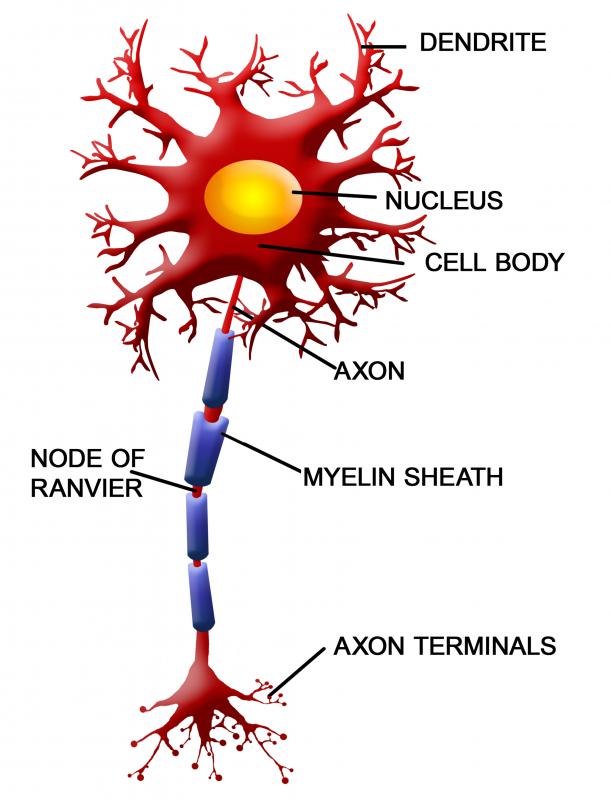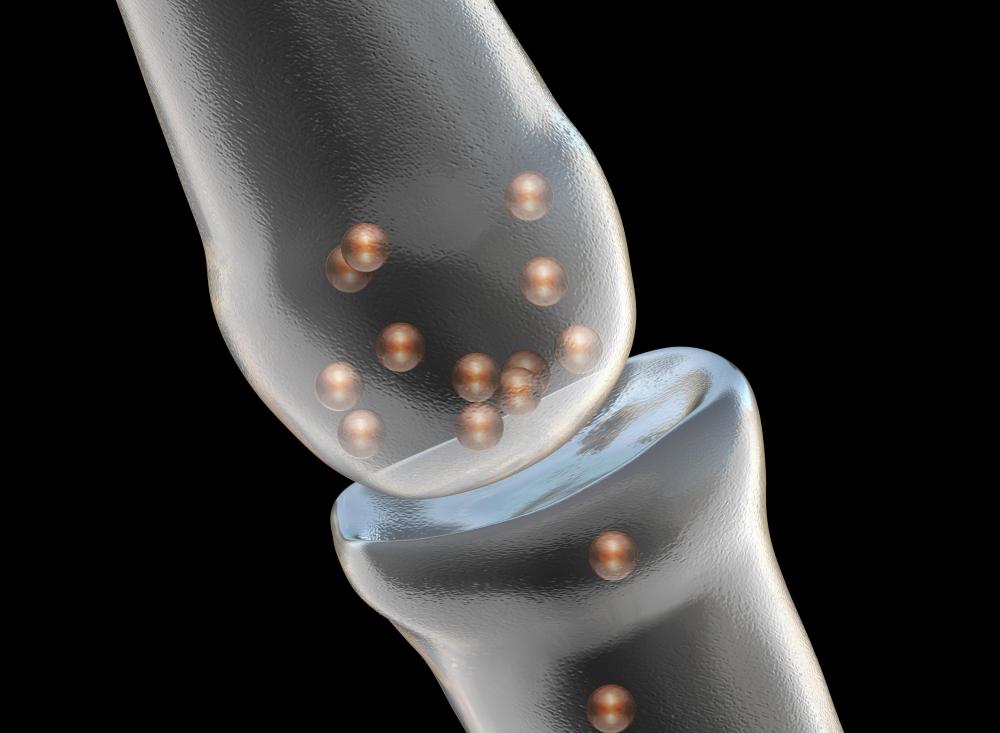At TheHealthBoard, we're committed to delivering accurate, trustworthy information. Our expert-authored content is rigorously fact-checked and sourced from credible authorities. Discover how we uphold the highest standards in providing you with reliable knowledge.
What are Dendrites?
Dendrites are an important part of nerve cells. The dendrites are responsible for picking up information from neighboring neurons and transmitting this information to the cell body, also known as the soma. From the soma, the information is passed on along the axon, another structure in the nerve cell, and the axon in turn transmits signals to the dendrites of neighboring neurons. This entire process occurs in a fraction of a second, allowing neurons to respond extremely rapidly to a wide variety of signals, from a message from the brain to take a breath to sensory input from a hand which is petting a cat.
Neurons are specialized cells which send messages with the use of chemical impulses sent across a space called the synapse. There are a number of different types of neurons, but all share the traits of having dendrites and axons, and the signals they send pass one way only, entering at the dendrites through receptors which respond to specific neurotransmitters and exiting at the axon. These cells also reset very rapidly after a signal has been passed along, so that they are ready for the next chemical impulse when it arrives.

The term “dendrite” comes from the Greek word for “tree,” reflecting the distinctively tree-like structure of the dendrites. These structures branch out from the cell body and become highly branched with tiny extensions. Each extension expands the surface area of the dendrite, ensuring that it will be less likely to miss messages from neighboring cells.

While one might think that the dendritic structure remains constant, studies have suggested that in fact the dendrites can change over time and in response to environmental cues. Alcohol, for example, causes the dendrites to shrink, while learning appears to lengthen them. The popular idea that drinking damages brain cells, as it turns out, is correct, even if it specifically hurts the dendrites, not the whole cell. These studies have shown the very real ways in which the brain and nervous system change, a trait known as plasticity which allows the body to evolve over the course of a lifetime to meet its needs.

There are many interesting images of neurons which have been stained and photographed under the microscope available on neurological and scientific websites. These images illustrate the many different patterns which dendrites can take, and show the way in which these structures can change over time. Images from the brain in particular are quite fascinating to look at.
AS FEATURED ON:
AS FEATURED ON:














Discussion Comments
When I learned about neurotransmission, we focused a lot on axons and dendrites. It helped a lot to think of the dendrites as "fingers" that reached out and grabbed onto the nerve impulses to bring the information to the cell body (soma). The impulse would then travel away from the cell body along the axon, or the "arm" of the cell so it could be passed on to other nerve cells.
OK, so I'll admit it,I'm kind of a biology nerd (and major, in case you're interested), but dendrites are really cool!
Did you know that dendrites are covered in smaller dendritic spines that hold the synapses to receive information during neurotransmission. The number and size of these dendritic spines is different for each dendrite.
Also, dendritic spines are constantly growing and shrinking. Drug use can have a big impact on the length and number of dendritic spines. Alcohol and morphine are two drugs that have been shown to shrink dendrites and dendritic spines, while feel-good substances like nicotine, cocaine, and amphetamine can increase their number and size -- whenever I think of that I kind of imagine the dendrites like seaweed, in motion. It's a bit creepy to think about all that going on in your body though, right?
Oh, one more fact -- reduced size and number of dendrites in the brain is related to many psychiatric disorders like depression, anxiety, and schizophrenia. This may be why it is so hard for smokers to quit smoking and for drug addicts to stop using.
Post your comments